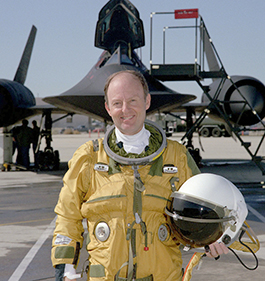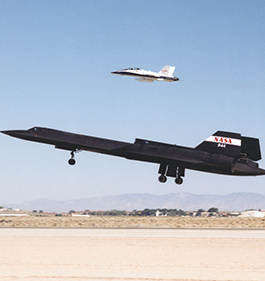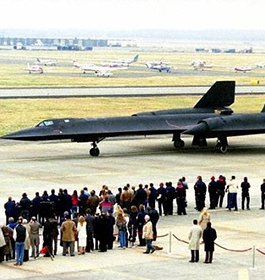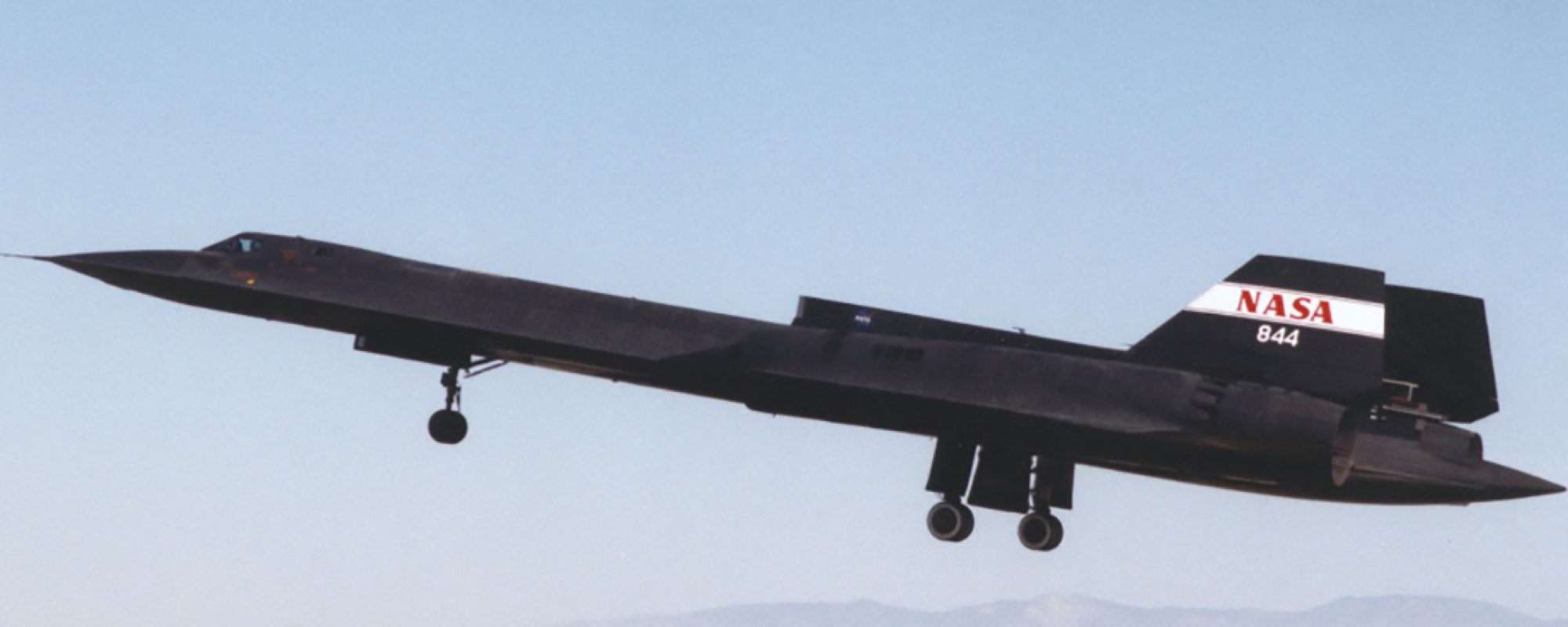October 9, 1999, NASA Ran the Final Farewell

Typical cruising altitude for commercial planes is around 35,000 feet, give or take a few thousand. The last flight of the SR-71 Blackbird reached 80,100 feet. That’s over twice as high as most of us will ever fly. It flew over three times the speed of sound on this flight: Mach 3.21, around 2,463 miles per hour. On board? A NASA crew of two: pilot Rogers Smith and flight engineer Robert Meyer.
Designed for the U.S. military to use as a spy plane, the SR-71 had several years’ service to NASA toward the end of its years. NASA used three of the planes for engineering tests on high altitude, high speed, and high heat conditions.
Image above: The last flight of the SR-71 at Edwards AFB, California. Oct. 9, 1999. Image credit: NASA
Inset image: Pilot Rogers Smith, Dryden Flight Research Center, 1992. Image credit: NASA
An Experience So Powerful, Some Onlookers Teared Up

On October 9, 1999, a sunny day in the Mojave desert of southern California, the SR-71 made its final flight for the crowd of aviation enthusiasts at an Edwards Air Force Base (AFB) Air Show and Open House. It took off with its chase plane tagging along like a younger sibling and flew out of sight. The SR-71 pilot sent out a fuel dump before the plane went supersonic, so the crowd could use the streaks in the sky to approximate the plane’s location before hearing two sonic booms. They sounded as the front of the aircraft, then the back of the aircraft, broke the sound barrier.
After reaching the astounding height and speed the plane was known for, it came back down in visual range for three fly-bys of the crowd. As it passed, the profound elegance of its design brought some onlookers to tears.
Inset image: The last flight of the SR-71 taking off from Edwards AFB with F-18 Chase in the background, Oct. 9, 1999.
This Became the Unplanned Final Goodbye
The true final flight of the Blackbird was actually planned for the following day, October 10. It would have been crewed by Ed Schneider and Marta Bohn-Meyer (Robert Meyer’s wife who, eight years earlier, became the first and only woman to crew the SR-71). However, a fuel leak scuttled those plans, making October 9, 1999 the day we mark the end of the Lockheed SR-71 Blackbird’s time in the skies.

Years earlier, the SR-71’s last flight for the military had been no less of a show-stopper. USAF Pilot Raymond “Ed” E. Yeilding and Reconnaissance Systems Officer Joseph “JT” T. Vida broke multiple speed records by flying coast-to-coast in 67 minutes and 54 seconds on March 6, 1990.
The Lockheed SR-71 Blackbird remains the fastest crewed air-breathing jet ever to fly.
Inset image: Lockheed SR-71A 61-7972, arrives at Washington Dulles Intl. Airport, March 6, 1990, where it was turned over to the Smithsonian’s National Air and Space Museum. Image credit: NASA
Curious about why the SR-71 program ended? Want to learn more about the plane’s design and the capabilities of its specially formulated paint?



